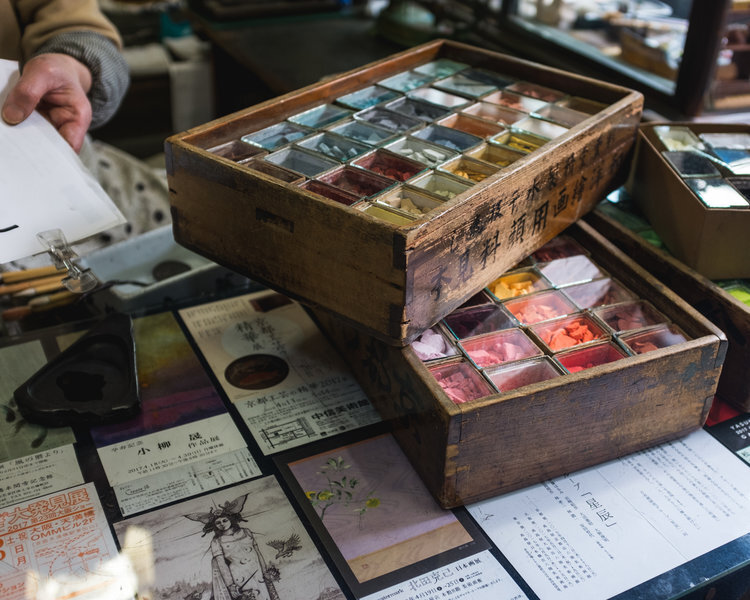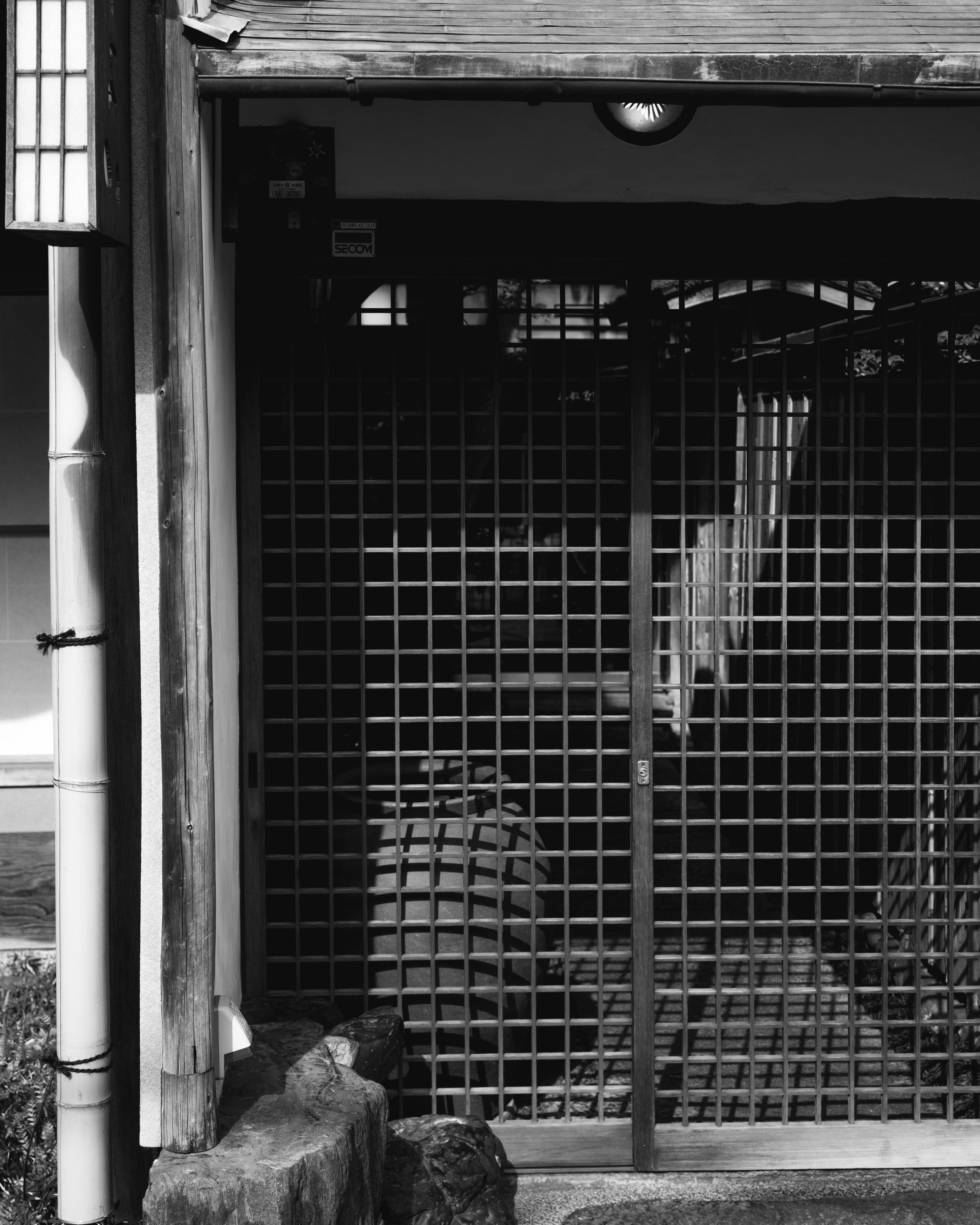Inside Kyoto

“But which black?” She was patient with me in her pithy English, “Which black?”
I stare blankly, knowing only one type of black before she begins rummaging through an oaken drawer. From within it, she removes a stone followed by two sticks of Japanese water paint of the finest quality. With a droplet of water, she grinds the paint like mortar in pestle, deftly dips a brush and produces what can only be described as a brown-black stroke. I catch her drift but pay rapt penitence as she continues: delicately smudging a bit more paint in water before flicking a blue-black stroke below the first. She looks up at me as if she just demonstrated how to properly write my name and all I can do is smile.
her husband talking brushes
Her devotion to craft is blatant. She talks my wife and I through different brushes and papers and strokes, wisdom from a lifetime of doing. As we exit, I gather the paints underarm and bow before ducking through the sliding door. A taxi and some bikers pass, a man in a suit opens an umbrella, a dumpling shop across the street flicks on its lights. Kyoto is a city behind doors. Behind one a salon and the next a Michelin star restaurant. Humble exteriors disguising unknown interiors, a typical block comprising a convenience store, a couple of houses, a 1000 year old shrine and a few more houses. It confounds my American mind. I’m reminded of the quote from The Hurricane about small doors opening into great rooms and how opportunity is humble, but the sentimentality is short lived. It’s lunchtime and a cool rain begins to fall. We duck into the local ramen shop and find the last 2 seats at the bar, slurping noodles and dipping dumplings in house-made soy.
Doors of Kyoto
brown black weights












